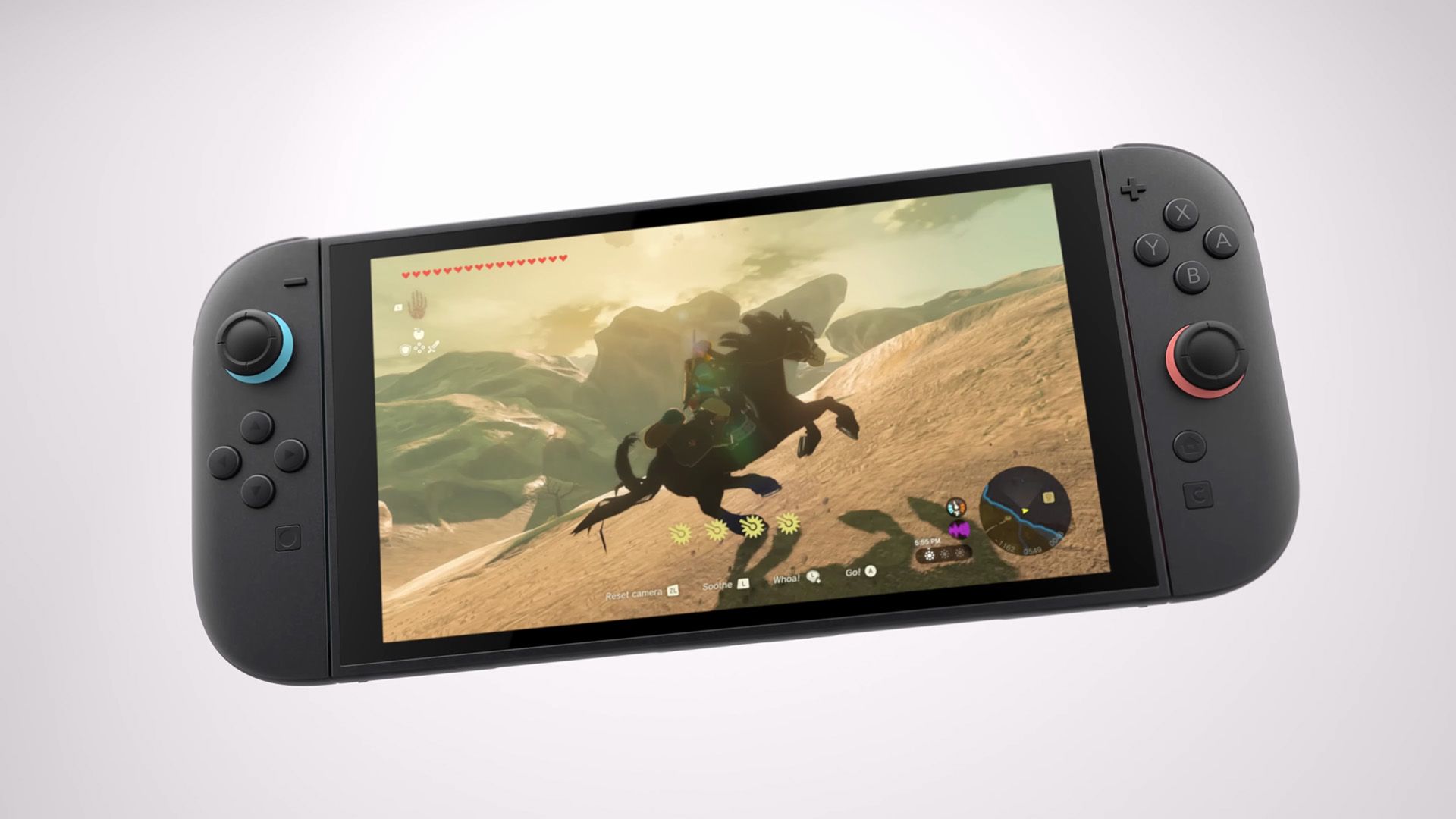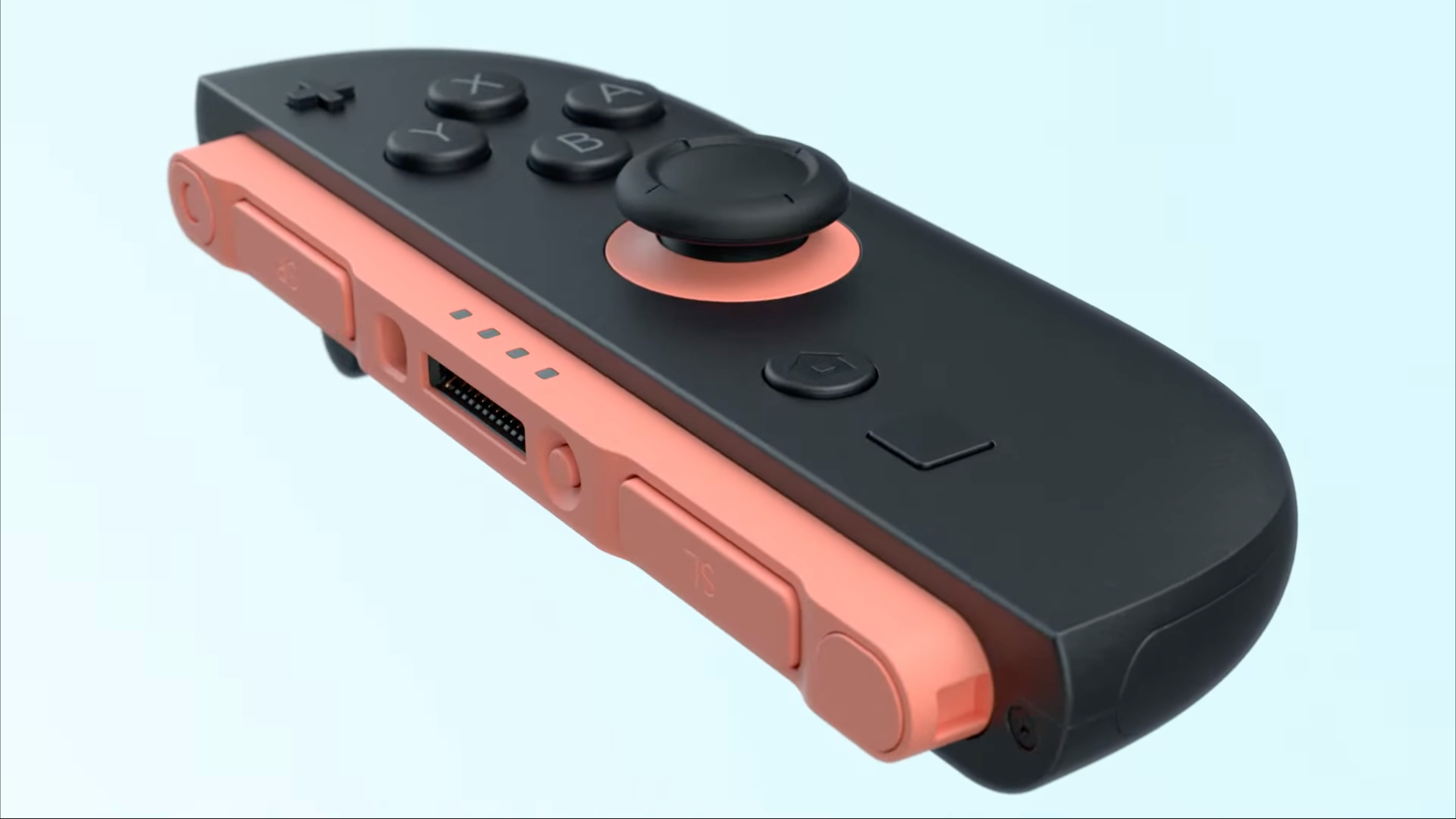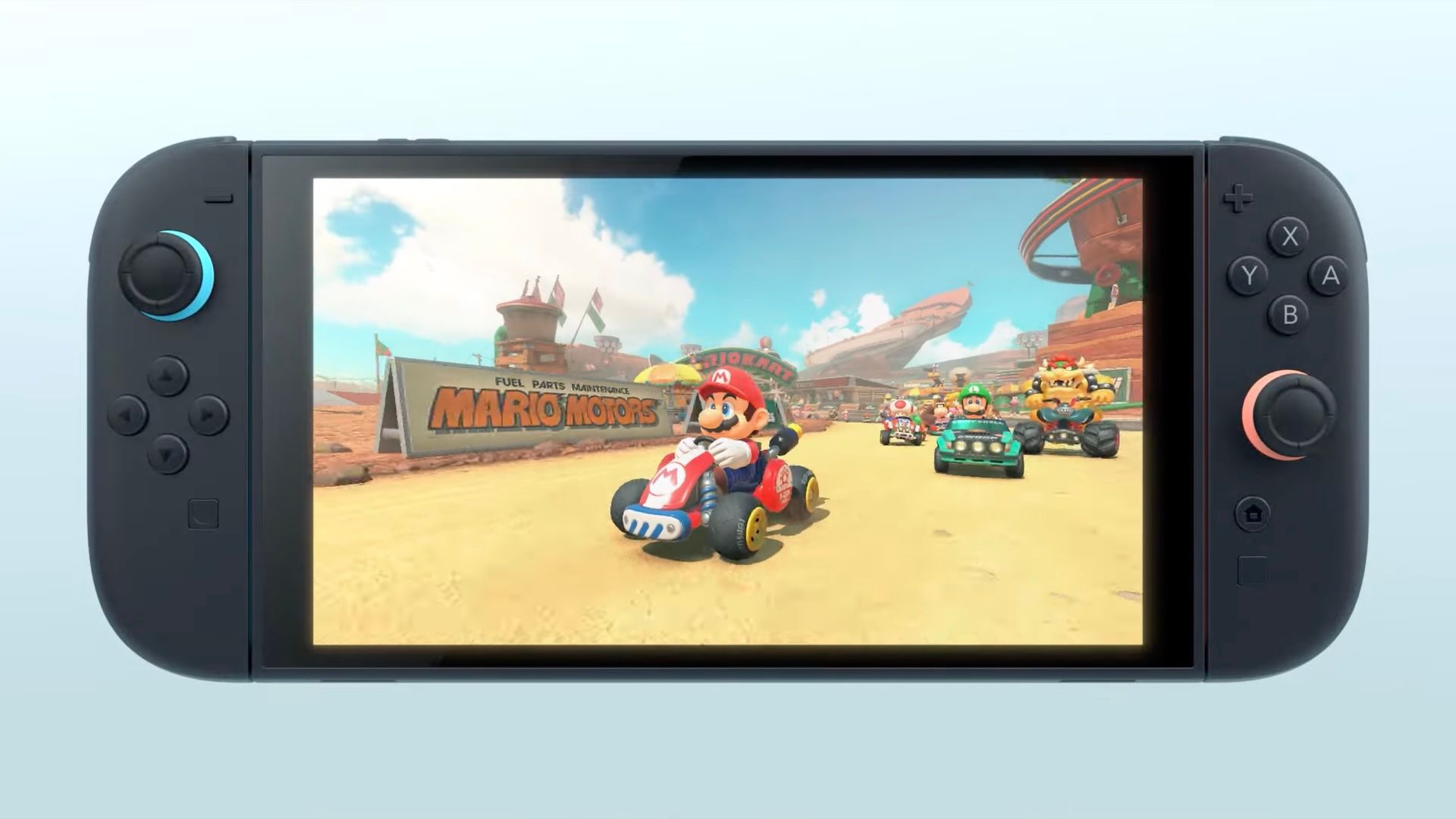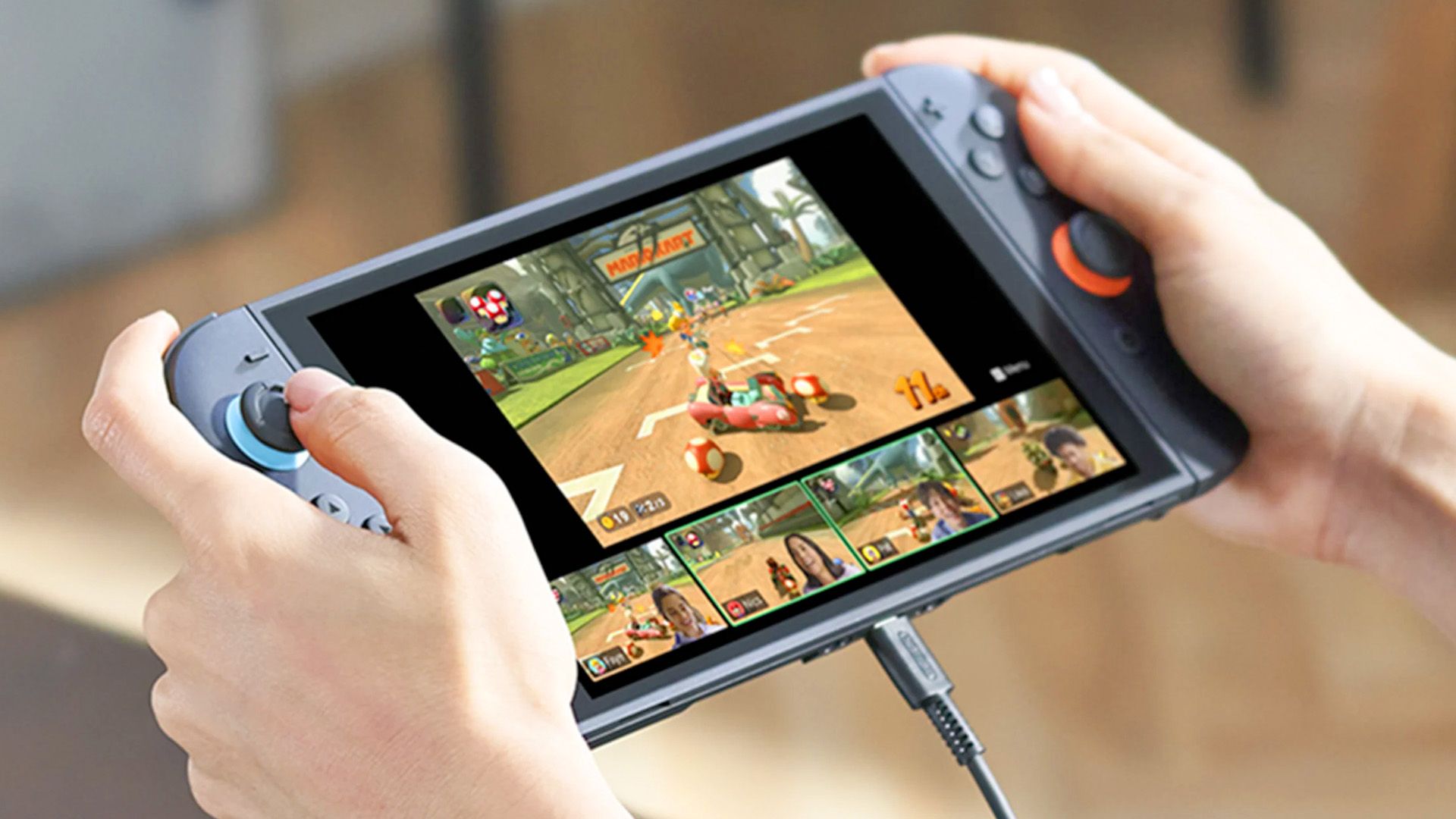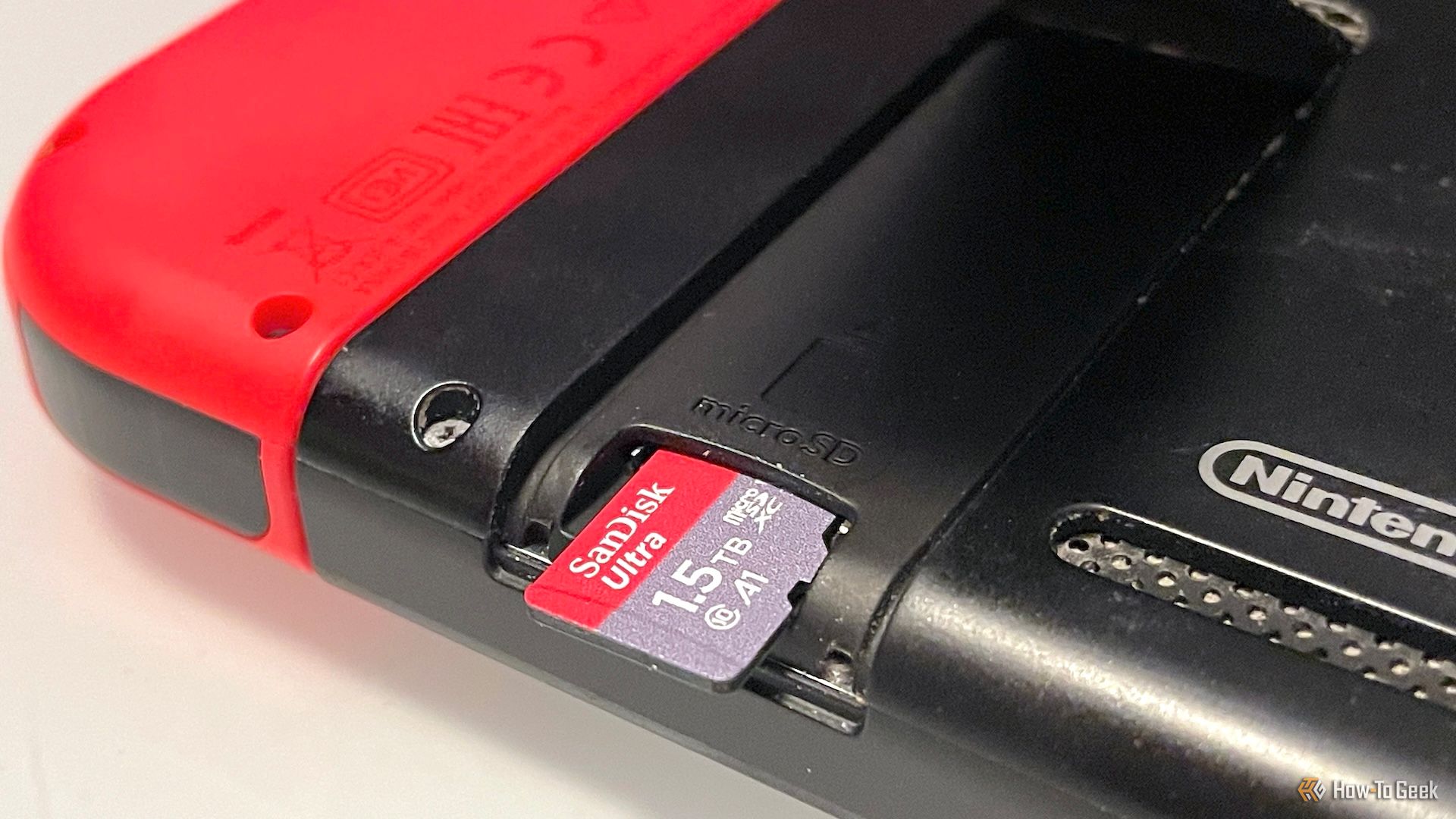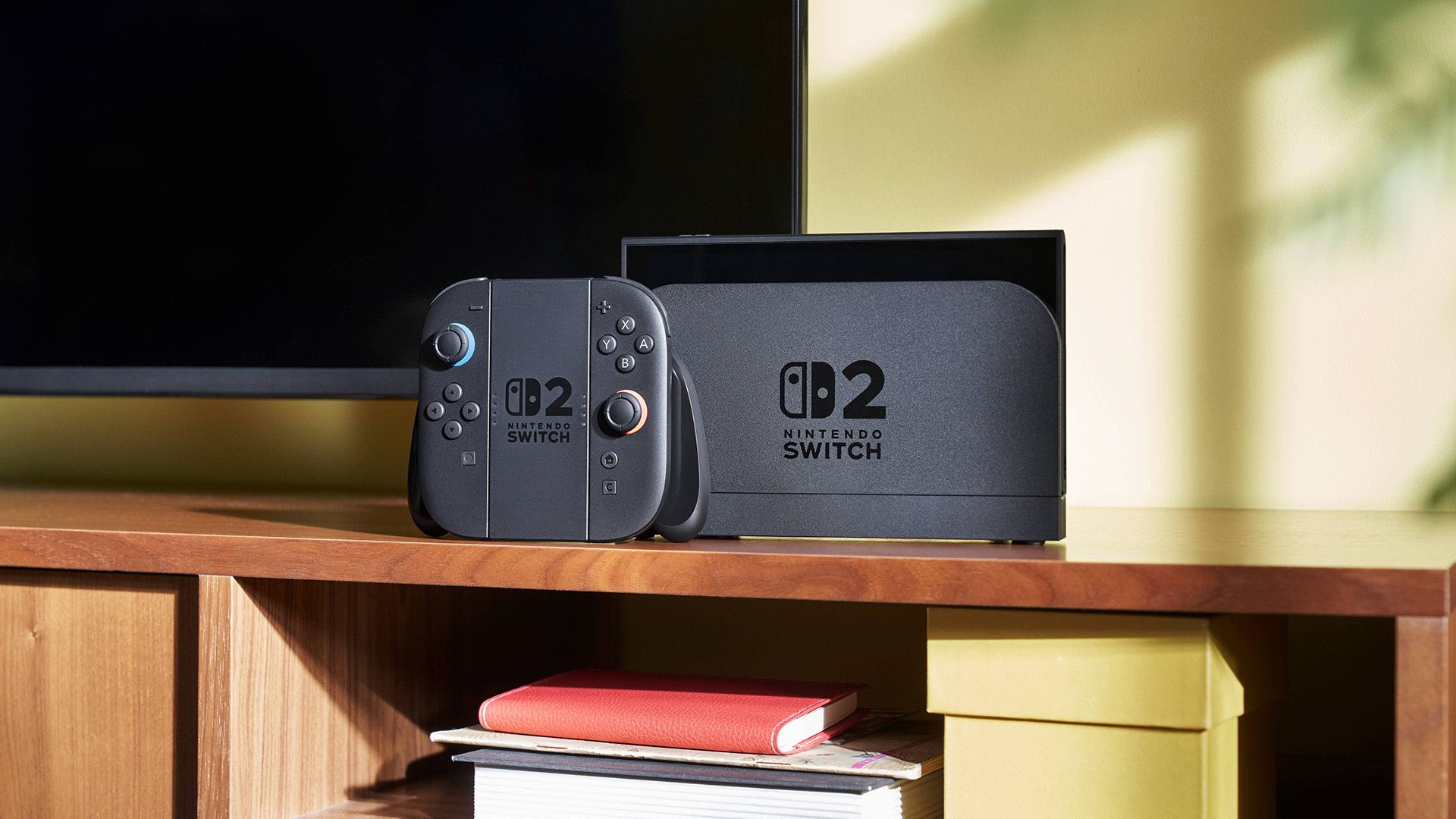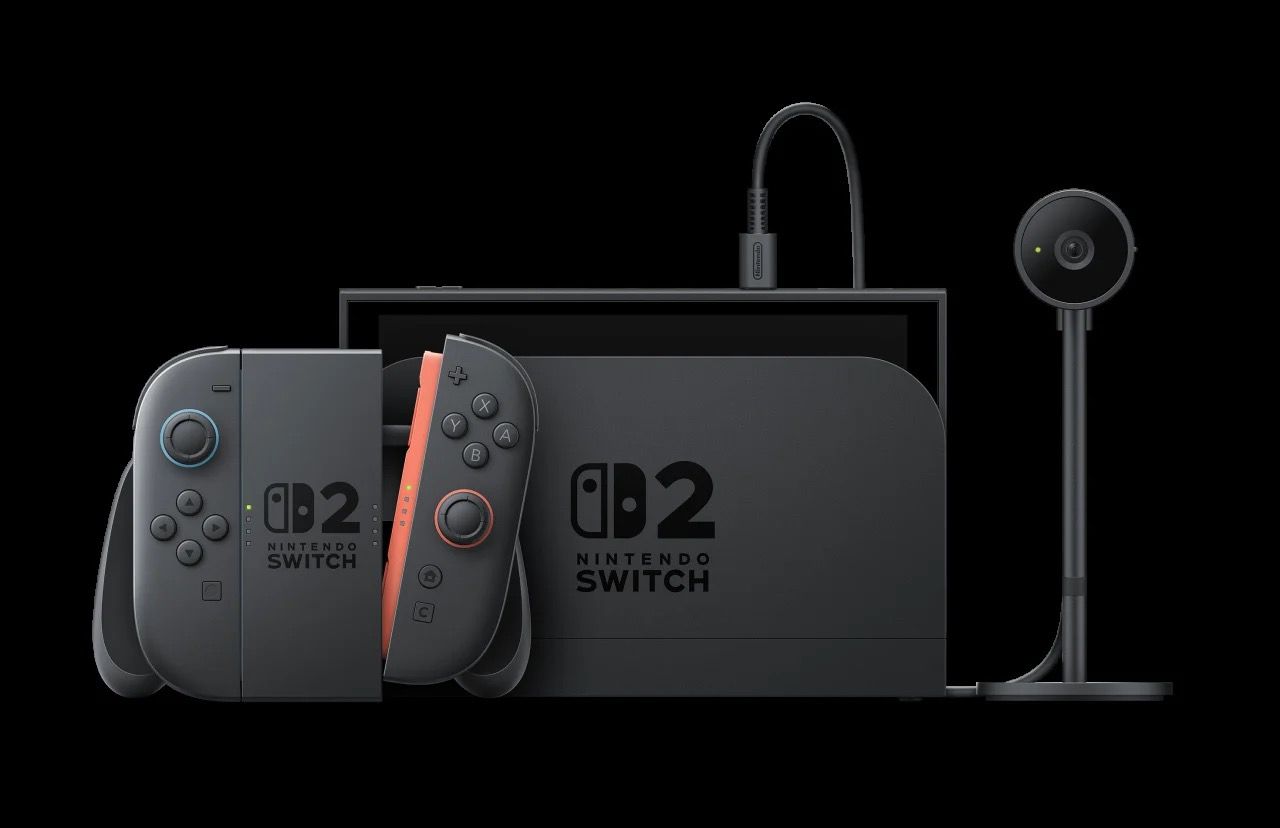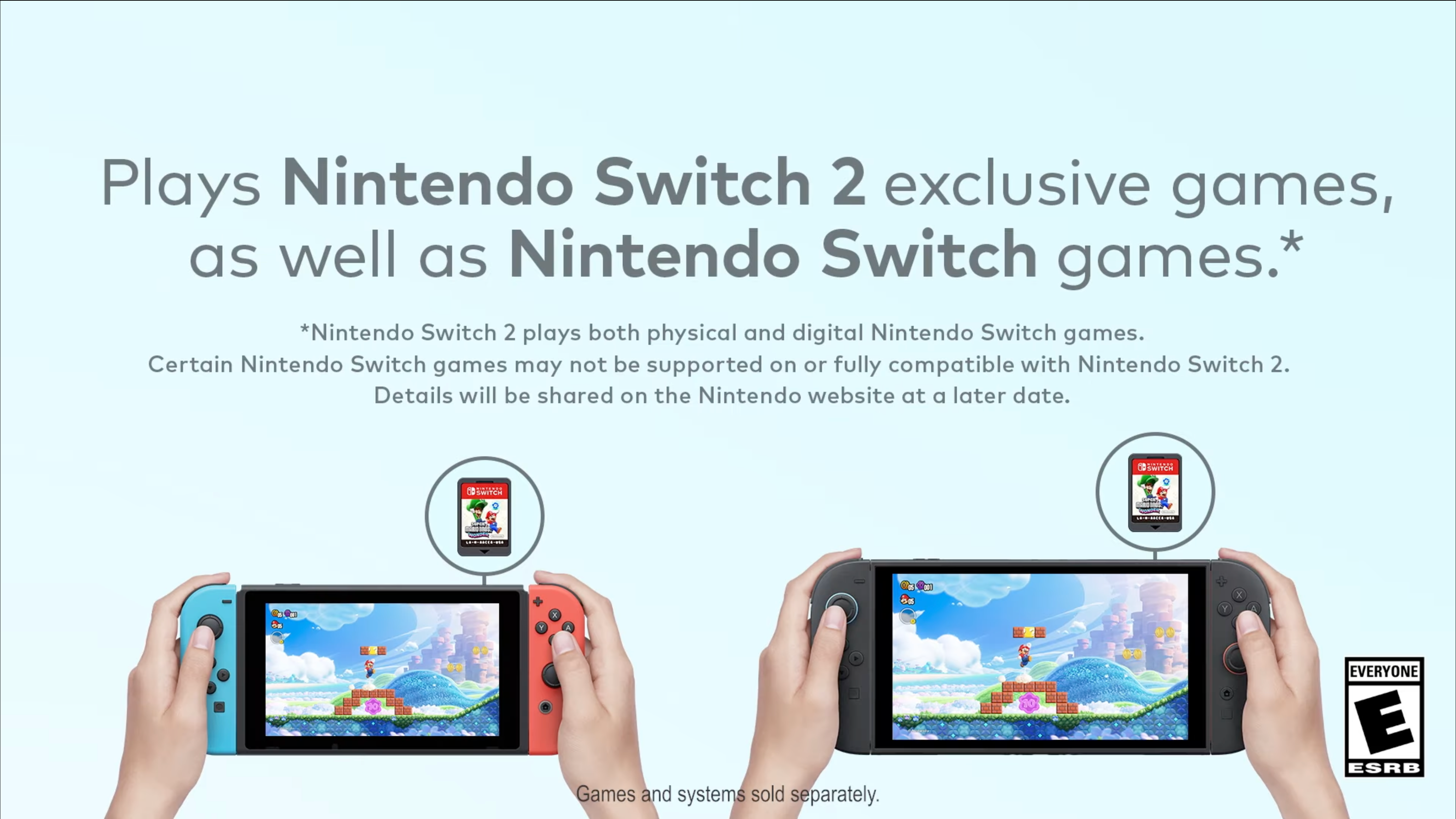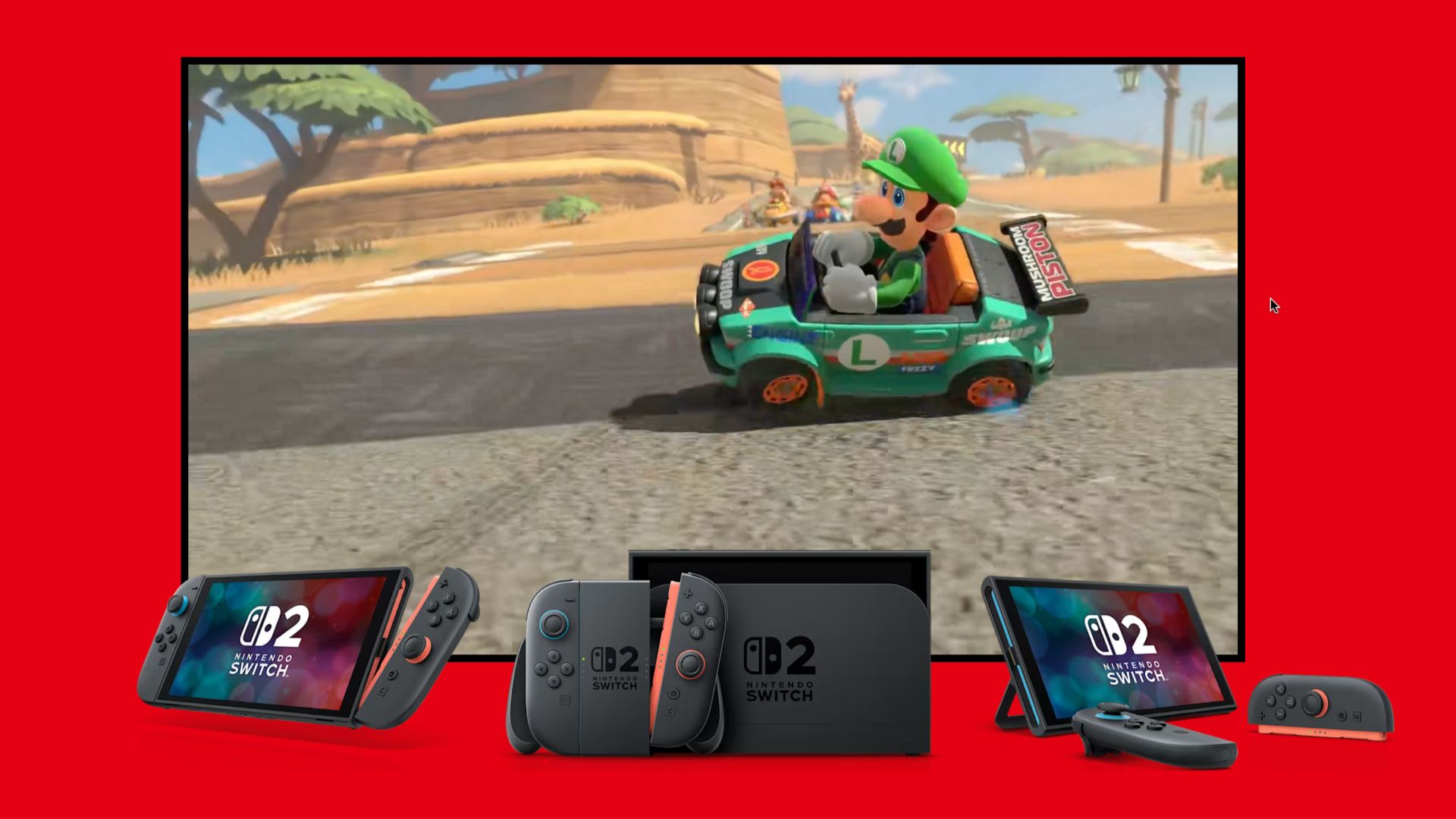The Nintendo Switch 2 sure looks like every Switch lover’s dream console. Nintendo’s sequel builds on what made the original such a hit, with some big improvements to hardware, controls, and even software.
Before you spend your hard-earned money on the console, here are 10 changes you should know about.
1
The Switch 2 Has Grown in Size
Nintendo’s latest portable gaming console is noticeably bigger and heavier than its predecessor, but it all works out in its favor. For instance, the new form factor allows for a larger, more immersive screen. The Joy-Cons have also grown in size; they feature larger buttons that should improve player comfort during prolonged sessions.
The Switch 2 also has a kickstand that covers its entire width; you can put it at multiple angles. There’s a new dock that matches the console’s size, slightly rounder edges, and an active cooling fan to regulate the temperature.
Moreover, the increase in the dimensions and the weight of the console should make it feel more premium.
2
The New Joy-Cons Double as Mice
Speaking of the Joy-Cons, they’re held in place via magnets (as opposed to plastic rails on the original Switch) and use pins to communicate with the console. To remove the controllers, you can press the mechanical button at the top, which separates them from the magnets and lets you pull them out.
Thanks to the built-in optical sensor, the Joy-Cons can also act as mice, allowing users to set aim or use other gestures as inputs by placing the controller flat on a surface (with its shoulder buttons facing down). The controllers now support HD Rumble 2, which can generate a wider variety of vibrations.
Switch 2’s Joy-Cons have a new C button that launches GameChat (free until March 31, 2026), a new social feature that lets players share their screens and talk while gaming. If you want, you can also purchase the Switch 2 Camera for an additional $50 over the console and convert the audio chats into low-yet-acceptable quality video chats.
3
Switch 2 Gets a Long-Awaited Display Update
While the original Nintendo Switch had a 6.2-inch LCD with 720p resolution and 60Hz refresh rate, the Switch 2 flaunts a 60% bigger 7.9-inch LCD with twice the resolution (1080p) and a variable refresh rate of up to 120Hz. However, not all games will support higher refresh rates.
Although we don’t have the exact numbers, the Switch 2’s screen is noticeably brighter and better at color reproduction. Further, the display supports HDR10 for crisp and vibrant visuals when connected to a compatible external display (presumably an OLED or a miniLED panel).
Speaking of external displays, the latest Nintendo console can also relay video in 4K resolution when docked with HDR support. Although the Switch 2 doesn’t feature an OLED screen, the LCD screen on the console looks amazing, even when held next to the Switch OLED (as seen in YouTube videos).
Nintendo also claims that the console’s speakers are more powerful than those of its predecessors. Moreover, the Switch 2’s screen gets the update it deserves. It is being speculated that the Switch 2 could get an OLED screen a few years down the line (as a mid-generation update), and I think that makes sense.
4
Switch 2 Features a Custom NVIDIA Chip
According to the official specifications page, the Switch 2 has a “custom processor made by NVIDIA.” According to NVIDIA, the console has a custom GPU with dedicated RT Cores and Tensor Cores, which increases the graphics performance by 10x (or so the company says).
In addition to more horsepower, the console also benefits from advanced features like Deep Learning Super Sampling (DLSS), which upscales visuals for an improved visual experience, and ray tracing for a realistic generation of lights, reflections, and shadows.
The console’s processing power enables 4K gaming at 60 fps via HDMI 2.0 (in TV mode) and up to 1440p resolution at up to 120fps.
The custom NVIDIA processor also provides several AI-based features, including face tracking and background removal with the Switch 2 Camera and a video overlay that places the feed from the camera on your gameplay when using video chat.
5
What About RAM and Storage?
The original Nintendo Switch had 4GB of LPDDR4 RAM and only 32GB of onboard storage (some of which was reserved for the system files). The handheld console also allowed buyers to expand the storage using a microSDHC or microSDXC card (up to 2TB), and users required one almost immediately.
That’s not the case with the Switch 2 anymore. The latest-generation console comes with 256GB of onboard storage, which should be enough for storing a handful of games offline. There’s support for storage expansion (up to 2TB), but you’d have to buy a new microSD Express card.
Although you can still use your microSD memory card with the Switch, its functionality is limited to copying screenshots and videos from the console; you won’t be able to load video games from your old memory card on the new console.
Although the new console is rumored to offer 12GB of RAM, Nintendo hasn’t confirmed the specification yet.
6
Switch 2’s Battery Might Not Perform as Well
The first-generation Switch had a smaller screen (with fewer pixels), didn’t support a higher refresh rate, and featured a less powerful chipset, which is why it managed between 4.5 and nine hours of playtime with a 4,310 mAh battery.
However, in this aspect, the Switch 2’s bigger and brighter screen (with twice as many pixels) and a more powerful chipset are causing a bigger battery (5220 mAh) to last for fewer hours (between two and six and a half hours).
Of course, a user’s actual battery life depends on multiple factors, including the brightness level and the game they’re playing. However, the fact that the minimum playtime has been reduced to less than half is a bit concerning.
7
You Get Two USB Ports on the Switch 2
The Switch 2 has two USB ports: one on the bottom (like the original Switch) and another on the top. I guess the console will spend more time plugged in than its predecessor. For those wondering, the device will take approximately three hours to charge (in sleep mode).
Besides the USB ports, the console has an AC adapter port, an HDMI port, and a LAN port. Wireless connectivity features include Wi-Fi 6 (faster than Wi-Fi 5 on the original Switch) and Bluetooth (though the version remains unspecified).
Switch 2 also supports physical game cartridges (the red ones). For supported games, you can also insert older cartridges (the blue ones) into the console.
8
Switch 2 Gets a New Accessory
Alongside the original Switch, Nintendo Sold a Pro Controller, colorful Joy-Cons, the Joy-Con Charging Grip, a two-way charging stand, and a carrying case (with screen protectors).
The Switch 2 also supports plenty of accessories. These include the new Switch 2 Pro Controller ($79.99), Joy-Con 2 Controllers ($89.99), Joy-Con 2 Charging Grip ($34.99), and the Switch 2 Camera ($49.99), which enables the video chat feature we talked about earlier.
Check out the list of official Switch 2 accessories here.
9
Switch 2 Is Backward-Compatible With Most Games
Aside from its superior processing ability, backward compatibility is another exciting aspect of the Switch 2. The company has explained how the console will emulate the original Switch games using a combination of software (which will convert the game’s data) and hardware (including performance enhancements).
However, not all the old games will be compatible with the Switch 2. According to an official support page, over 95% of Nintendo’s 122 titles are compatible with the new console. However, only 20% of the partner games from other developers run smoothly on Switch 2, while tests are still in progress on the remaining titles.
Some games won’t run due to accessory-related issues. For instance, the Nintendo Labo Toy-Con 04: VR Kit isn’t compatible, as the Switch 2 can’t fit in the Toy-Con VR glasses. Then, some games require the original Switch’s Joy-Cons, such as Ring Fit Adventure.
Many titles should be available in dedicated Switch 2 Editions, optimized for the new console’s hardware, but you’d have to pay an upgrade price (free if you’re a Switch Online Plus member). Then there are titles entrusted with the responsibility of selling the Switch 2 to early adopters, including Mario Kart World ($80), Donkey Kong Bananza ($70), Kirby Air Riders, and Survival Kids.
To appeal to a broader audience, Nintendo has also added support for a few (but popular) PlayStation, Xbox, and PC games, including titles like Elden Ring, Cyberpunk 2077, and Madden. Although the games won’t impress you with their graphics performance on the Switch 2, the fact that a handheld console is running them is commendable.
10
Switch 2 Isn’t for Budget Buyers
The Switch 2 will be available for purchase starting June 5, 2025. Though Nintendo planned to take pre-orders from April 9, 2025, it has been delayed due to the new global tariff rates announced by the U.S. government.
There’s some speculation about the revision of the $449.99 launch price, which is already a massive increase over the Switch 1’s price ($299.99). On top of that, buyers would also want a couple of new games or Switch 2 Edition upgrades, each of which will add to the cost.
|
Nintendo Switch 1 |
Nintendo Switch OLED |
Nintendo Switch 2 |
|
|
Price |
$249.99 |
$349.99 |
$449.99 |
Nintendo still lists a Switch 2 + Mario Kart World bundle on its website for $499.99, but it is unclear whether the price will change in the coming days.
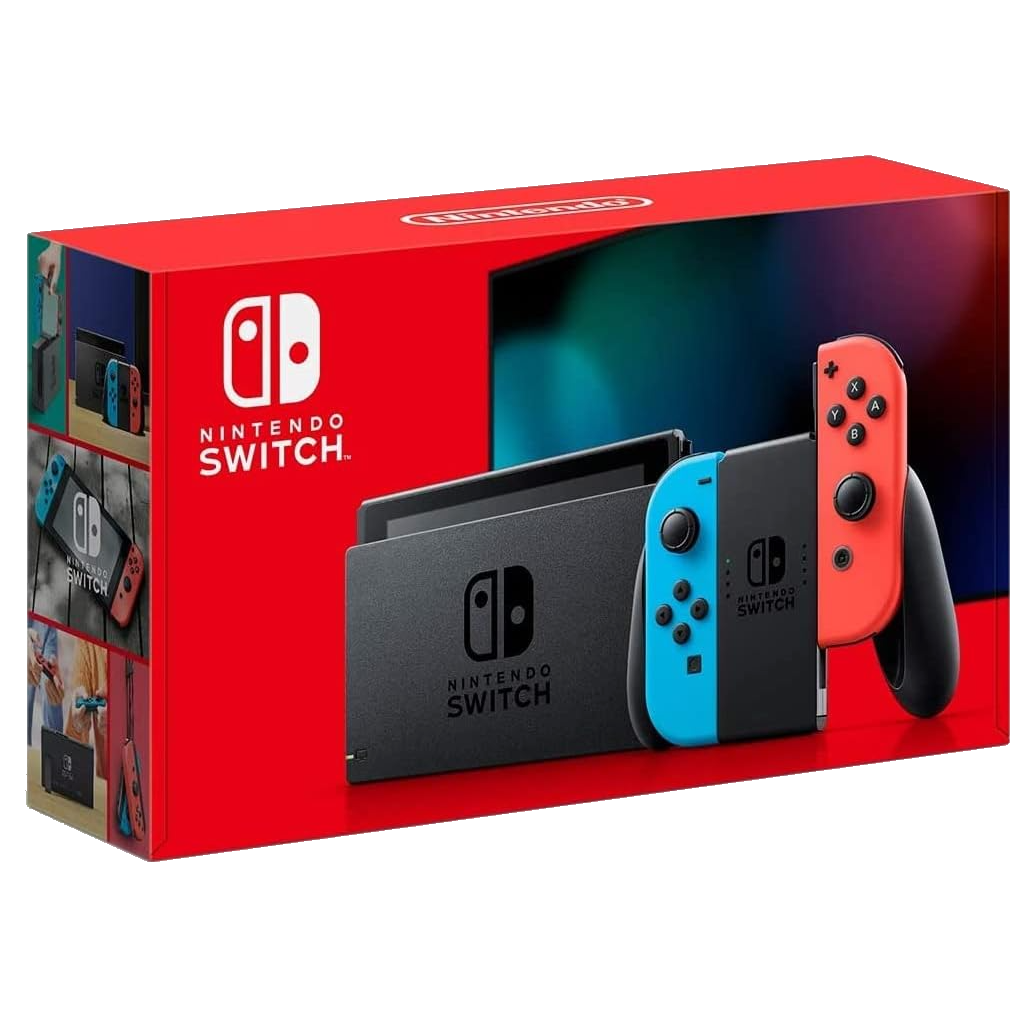
Nintendo Switch
$227 $300 Save
$73
Moreover, the Switch 2 is a solid improvement over the 2017 Switch, but all the fancy features, video games, and accessories come at a higher price, which could concern budget buyers.


